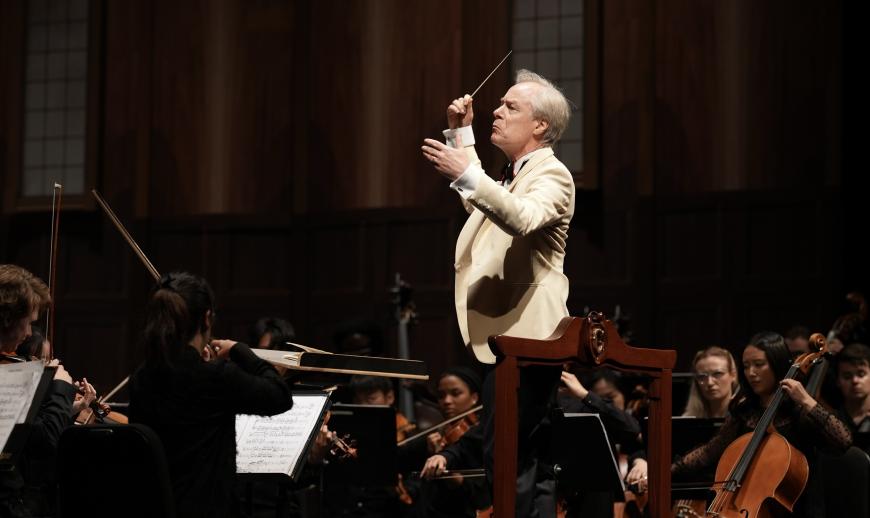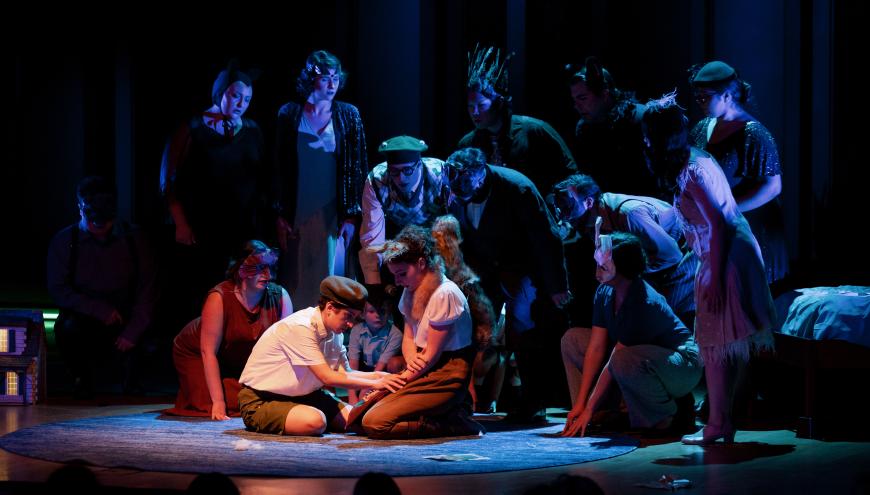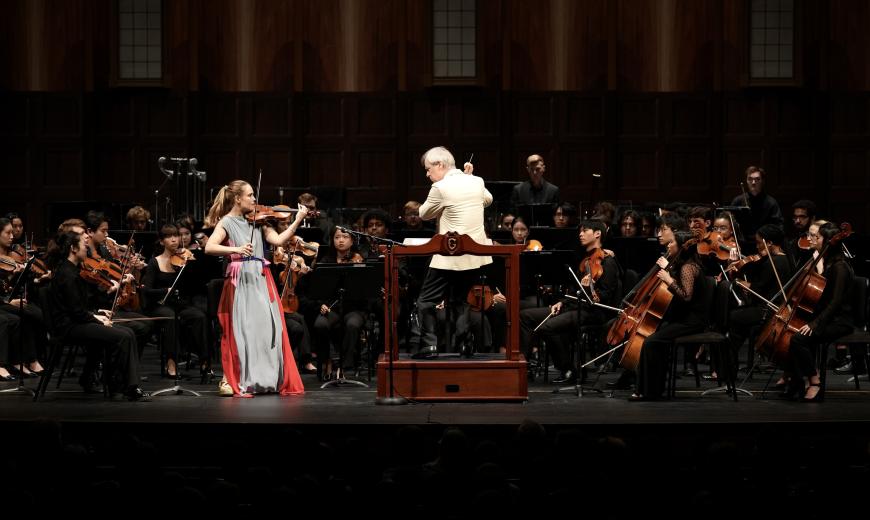
It may be an international summer training program, but the Music Academy of the West does double duty as a presenter of classical concerts in Santa Barbara during otherwise dormant summer months. Artists and conductors of global repute come to town to work with young musicians of impressive caliber. The music-loving community flocks to the steady flow of performances at the lavish Miraflores estate and downtown at The Granada Theatre, as well as to master classes and other diversions dotting the festival’s calendar.
In its 77th year, the Music Academy has launched a new chapter under recently appointed President and CEO Shauna Quill, who took over from Scott Reed. Among the highlights of this year’s concerts were a strikingly sharp reading of Igor Stravinsky’s The Rite of Spring under Anthony Parnther’s baton, Academy faculty member Jeremy Denk’s insightful playing of (and musing about) Charles Ives’s “Concord” Sonata, a performance of Philip Glass’s complete piano etudes (led by Timo Andres), and a lean yet bold staging of Carmen conducted by rising star Daniela Candillari.

This past week was fortified by two other festival highlights. On Saturday, July 27, John Adams’s wise and juicy Violin Concerto came to the Granada in its full glory and gumption with virtuoso soloist Leila Josefowicz and conductor David Robertson. And on Thursday, July 25, there was a teasingly quirky and truncated evening featuring Maurice Ravel’s mischievous one-act opera L’enfant et les sortilèges (The child and the spells).
As directed by Mary Birnbaum and with a set tapping into the kids’ world of Where the Wild Things Are and Goodnight Moon, the opera production transformed Hahn Hall into a fantastical and secretly sardonic artistic playground and dreamscape. Ravel’s tart lark of a piece, from an imaginative and rather surreal libretto by Colette, craftily blends the composer’s tonality-pushing language with a fable in which the rowdy protagonist engages with and enrages a series of characters, from abused animals to household objects and furniture. Comeuppance is in the offing, come the second part.
Mezzo-soprano Mariam Mouawad was ideal as L’enfant, a kinetic presence whose wildness is eventually tamed into a peaceable resolution, dramatically and harmonically. Mezzo-soprano Lydia Mae Brown impressed as the long-suffering Maman, and the large ensemble cast of animal and inanimate characters — abetted by the Music Academy’s Sing! children’s chorus — generally delivered a performance of winning and apt madness. Ravel’s undeservedly obscure gem had a proper and validating night out in Montecito.

The impetus for Adams’s concerto came through the urging of late violinist Jorja Fleezanis, a teaching artist at the Music Academy for a decade, who premiered the piece with the Minnesota Orchestra in 1994. Saturday’s performance, 30 years after the piece’s premiere, made a profound impression and confirmed the score’s evergreen emotional power.
It doesn’t hurt that the young forces of the Academy Festival Orchestra marshal a taut, polished, and flexible sound beyond their collective years. But what made this performance the pinnacle of this summer’s orchestral series was Josefowicz and Robertson’s intense and subtle impact (the two’s 2018 recording for Nonesuch is a triumphant realization of the piece).
Structurally and stylistically, Adams’s concerto is a prime example of his ism-defying ability to blend minimalist ideas with porous orchestral textures, tinged with his own brand of American-grained mysticism. The concerto opens in a free, looping manner, the movement neutrally titled “Quarter-note = 78.” A slow violin motive floats above circular ascending lines in the orchestra to hypnotic effect. Intensity and tempo build, melting into the liminal landscape of the second movement, aptly titled “Chaconne — Body Through Which the Dream Flows.”
Josefowicz shifted seamlessly from the artful, contemplative mode of the Chaconne to the precision-geared fury of 16th notes for the final Toccare movement, the most categorically minimalist section of the work. Meanwhile, Robertson — a specialist in contemporary music — guided his young, hungry, and musically-fit orchestra through the interpolating rhythmic rigors of the movement to thrilling ends.
Sergei Prokofiev’s commanding and witty Symphony No. 5, also performed with a bracing and warming clarity, arrived after intermission. It was an ideal and enlivening complement to an orchestral program dedicated to accessible but adventurous 20th-century music.




